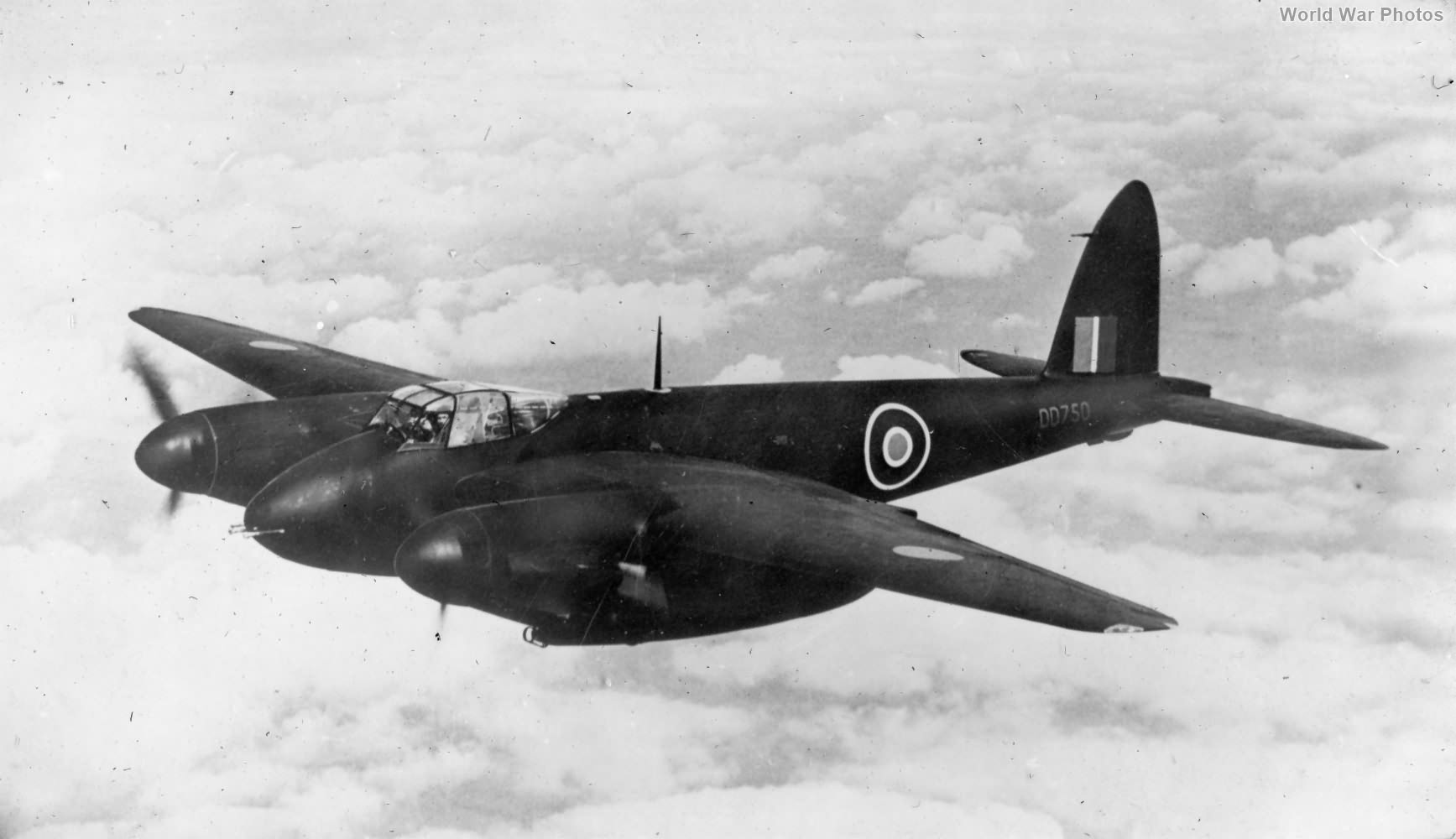Night fighter version of the de Havilland Mosquito, had distinct camouflage and markings as it evolved during World War II.
Initial Service – RDM2A “Special Night” (1942):
- When the NE Mk II entered service, it was painted in a very matt black called Black (Special Night), also known as RDM2A. This paint had a coarse, thick texture, which caused a speed penalty due to increased drag and was prone to rapid wear.
- The national markings included Type R roundels (54 inches in diameter) on the upper wings and C1 Type roundels (36 inches) on the fuselage sides.
- The 24-inch C1 Type fin flash was also applied to the vertical stabilizer.
- Squadron codes and serial numbers were painted in Dull Red, including the 8-inch serial numbers, a scheme typical for night fighters during this period.
Shift to Medium Sea Grey/Dark Green (Autumn 1942):
- By autumn 1942, the problematic RDM2A paint scheme was replaced. The new scheme featured Medium Sea Grey as the base color, with a Dark Green disruptive camouflage pattern applied to the upper surfaces. The vertical fin, however, remained Medium Sea Grey.
- Dull Red squadron codes and serial numbers were retained, as well as the roundels and fin flashes from the earlier scheme.
- This disruptive scheme continued to be used on night fighters through the end of World War II and into the 1950s.
D-Day Invasion Stripes (1944):
- During the D-Day landings in June 1944, Allied night fighters had invasion stripes applied to their Mosquitoes. Initially, these black and white stripes were painted around both the wings and fuselage. Over time, the stripes were limited to the fuselage and later reduced to the lower section of the fuselage only.
Modifications by 100 Group (Late War):
- 100 Group Mosquitoes, which specialized in electronic warfare and radar countermeasures, had their lower surfaces sprayed in Night Black. The demarcation line between the black and the upper camouflage colors was soft and low on the fuselage.
- In most cases, the squadron codes and roundels were left untouched by the Night Black overspray, so they did not need to be reapplied.
- The radomes on the NF Mk XII, XIII, and XVII variants were often painted completely in black.
- The demarcation pattern on these Mosquitoes was often complex, with a distinctive swooping line that curved down from the wing trailing edge, passed under the squadron codes and roundels, and curved back up to the centerline of the tailplane. However, this pattern was not uniform across all 100 Group aircraft, and there were many variations in the paint schemes.
